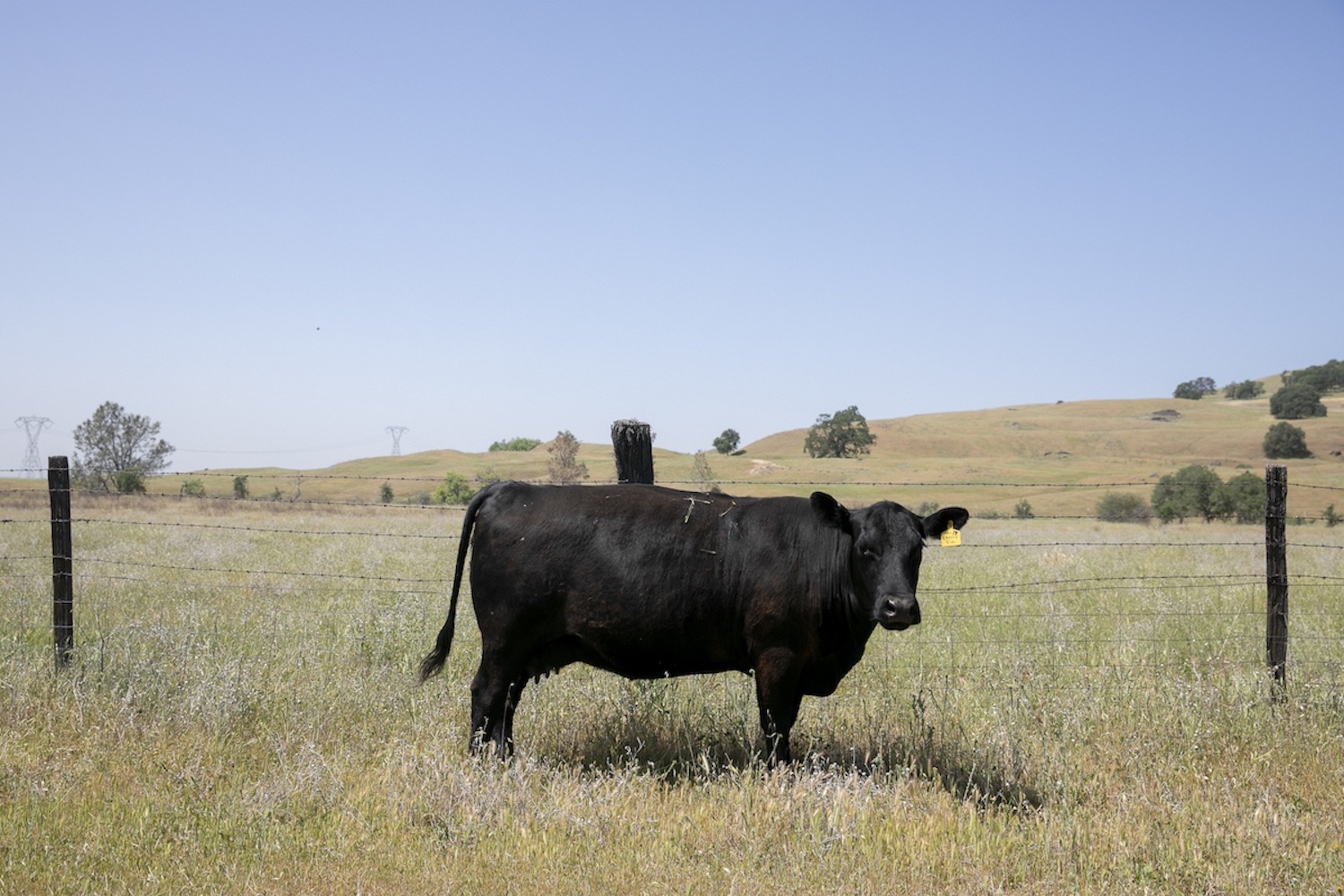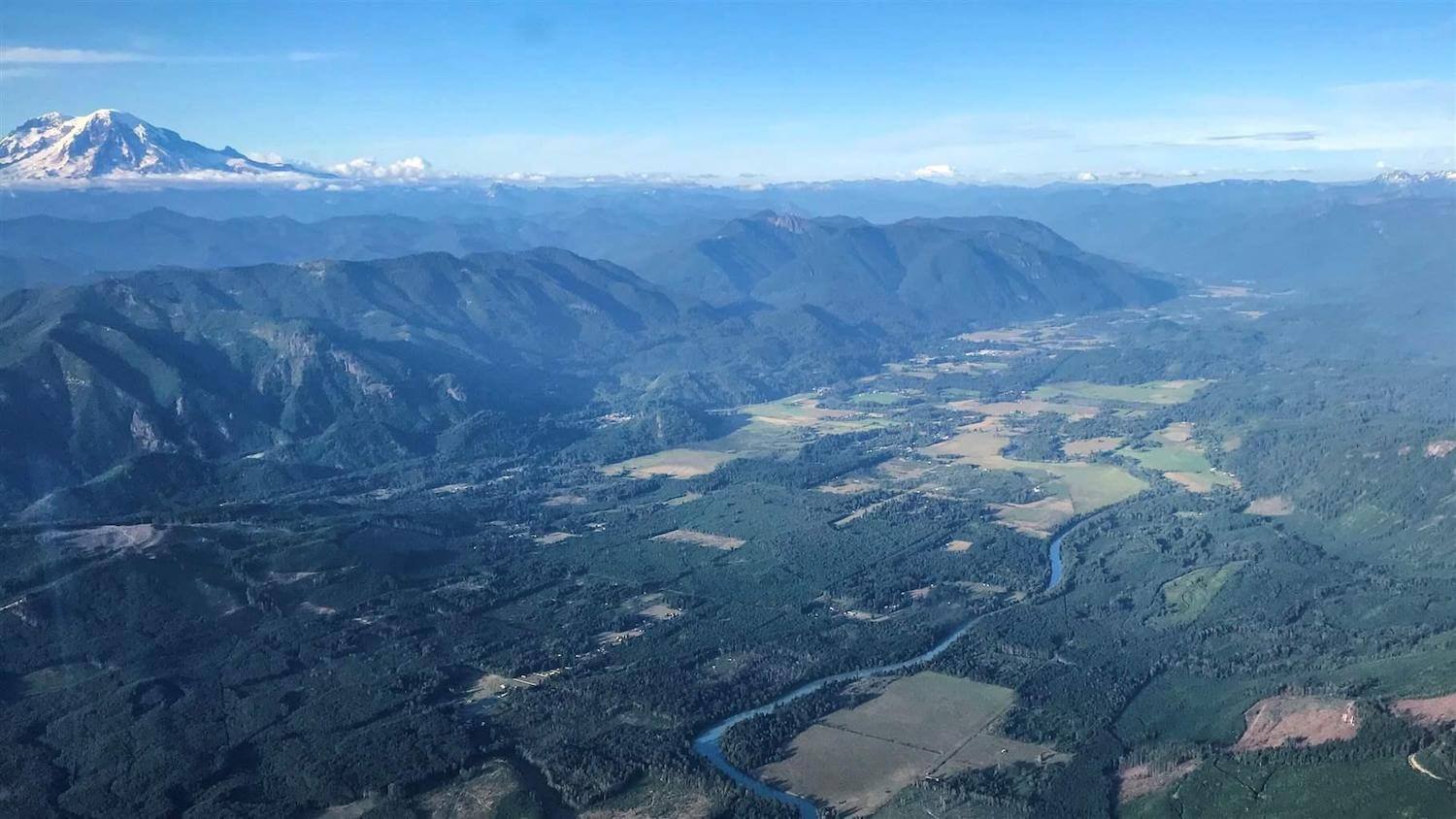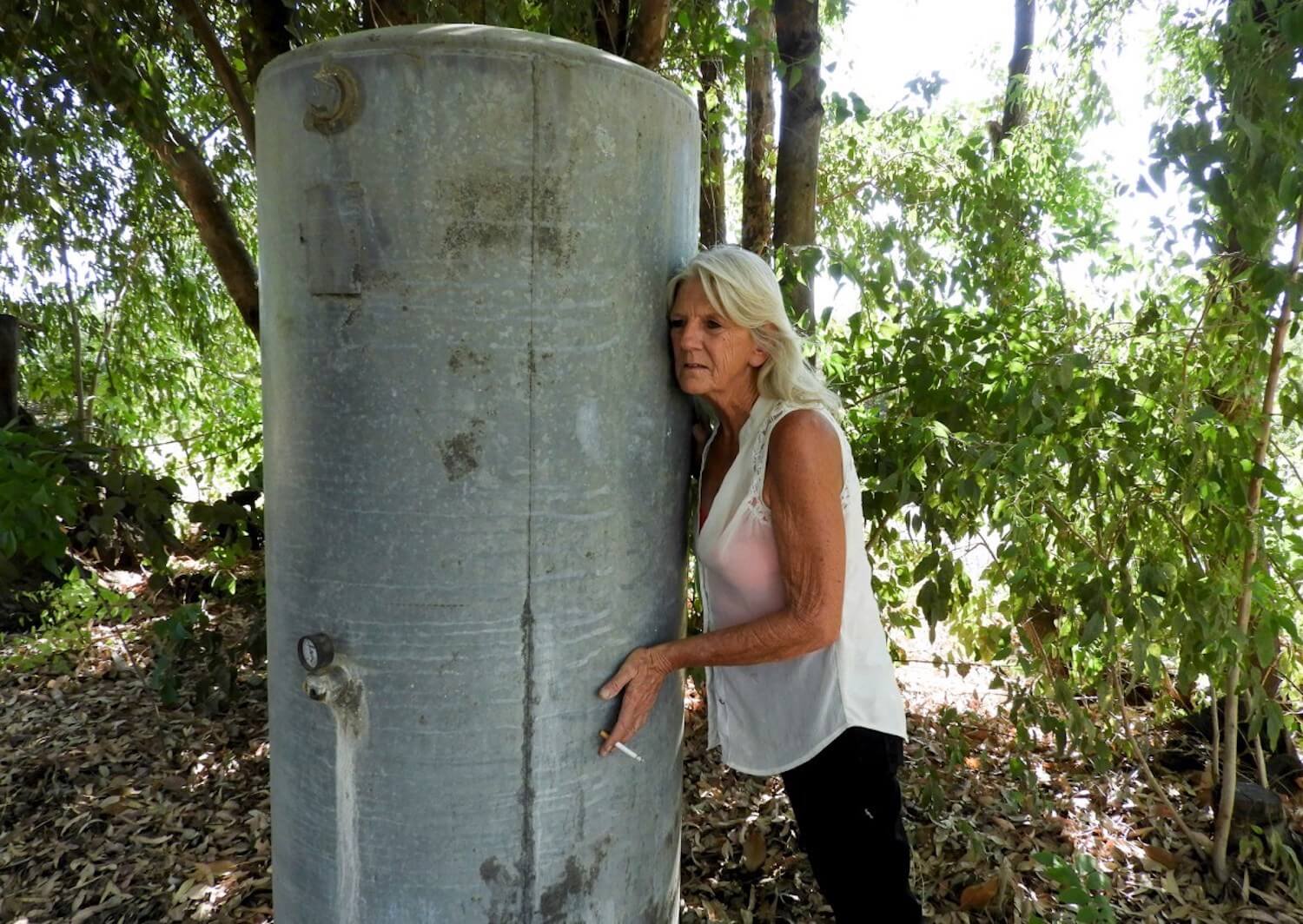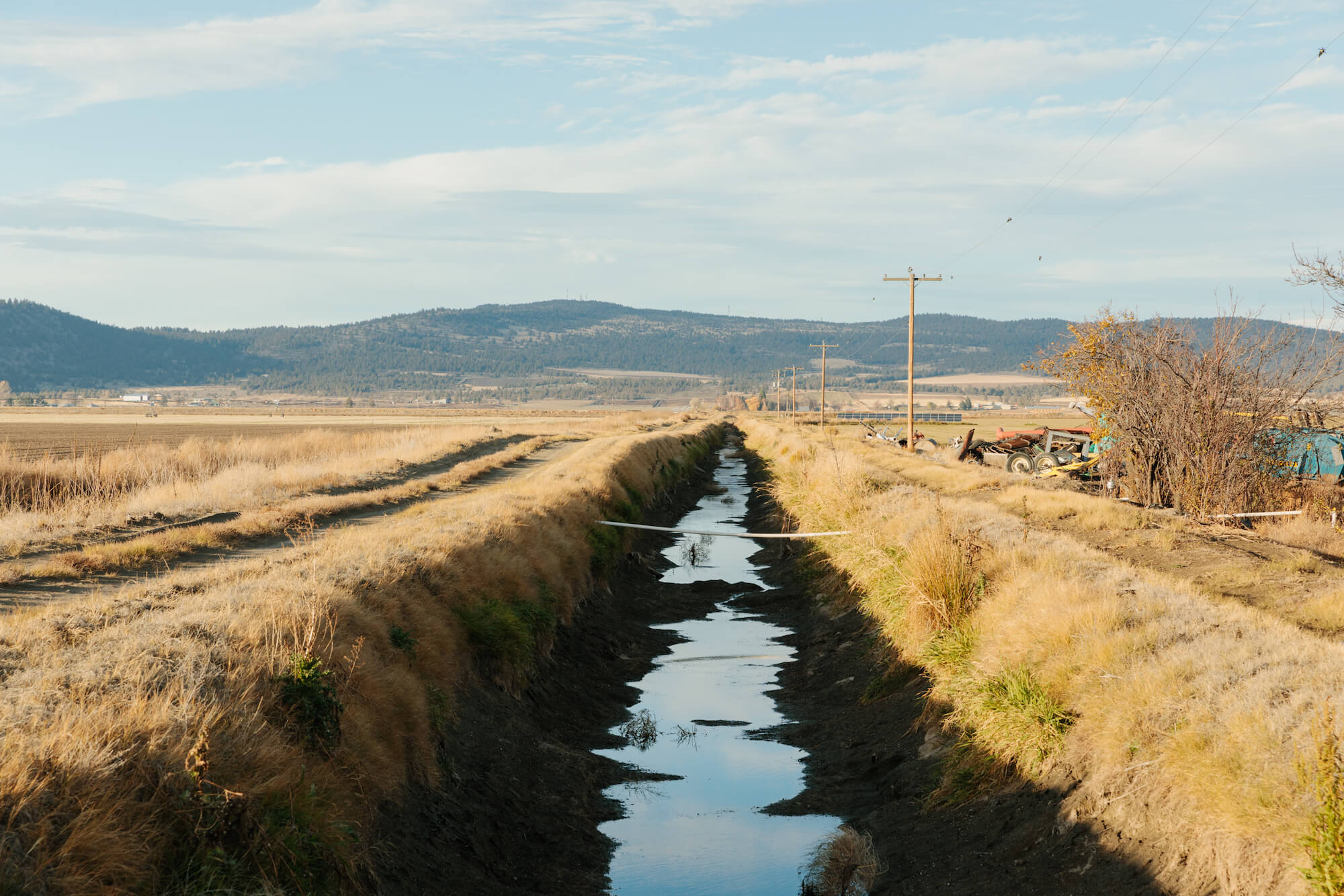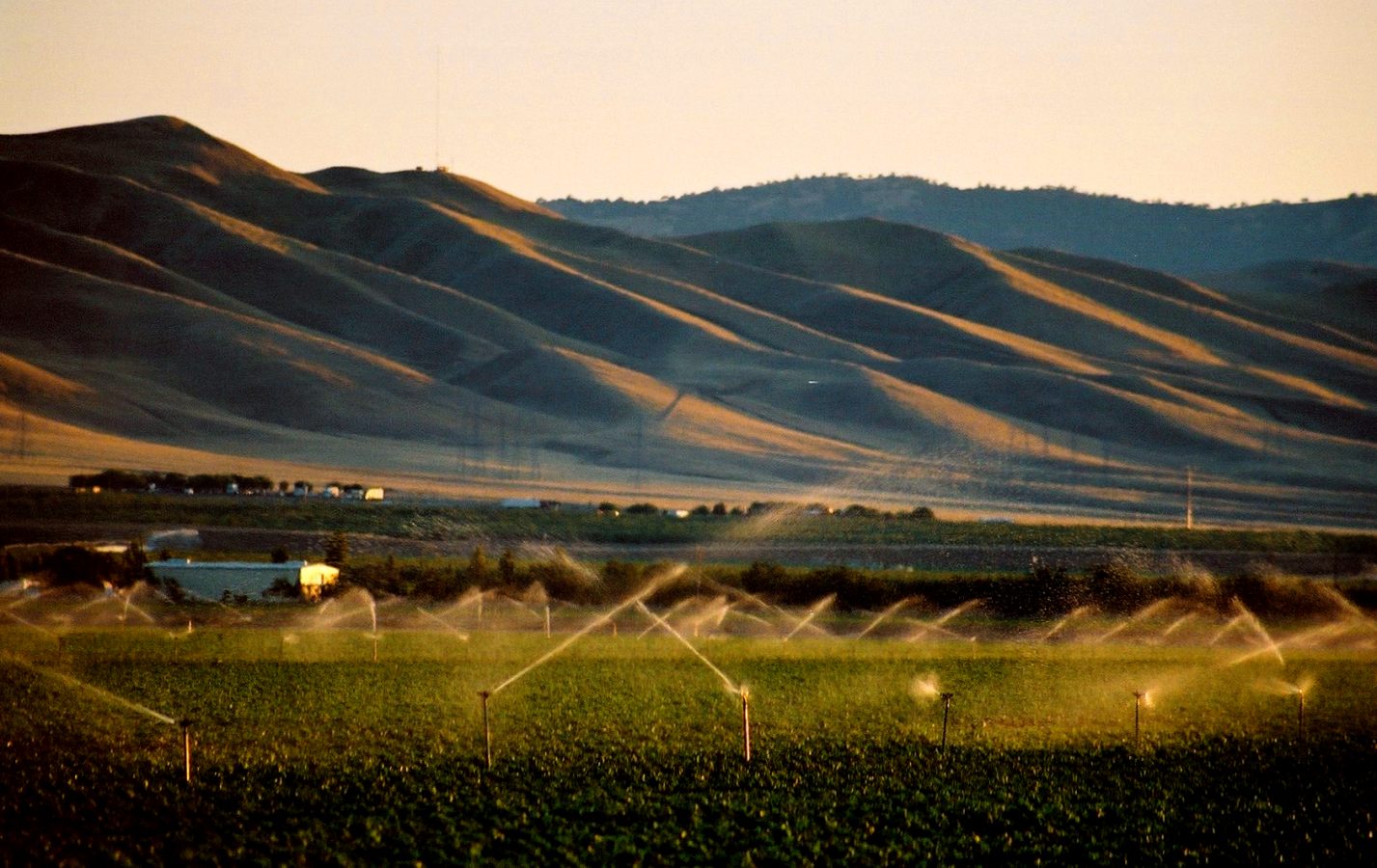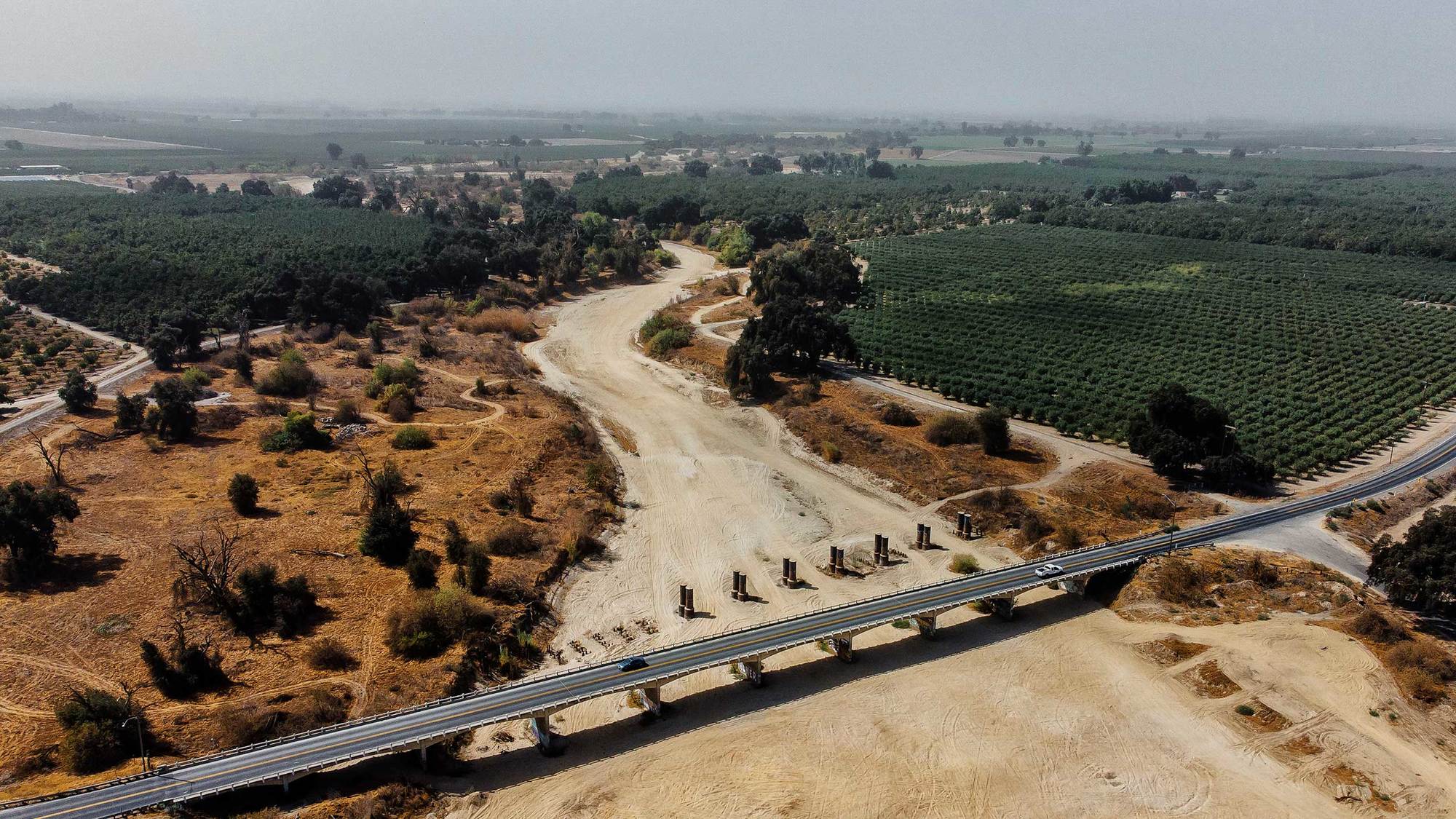
Small farmers in California’s San Joaquin Valley, already suffering from years of drought, have watched hundreds of thousands of acre-feet of water get pumped out of the area.
This piece is part of a collaboration that includes the Institute for Nonprofit News (INN), California Health Report, Center for Collaborative Investigative Journalism, Circle of Blue, Colorado Public Radio, Columbia Insight, The Counter, High Country News, New Mexico In Depth, and SJV Water. The project was made possible by a grant from the Water Foundation with additional support from INN and the Fund for Investigative Journalism (FIJ). For earlier stories in the Tapped Out series, click here.
Farmers in the heart of California’s agricultural belt – Kings County – sense something is awry with their water supplies. In this intensively farmed, perennially dry county, water is leaving at a concerning rate.
“We’ve all seen it,” said walnut farmer Steve Walker. “We haven’t sat down and put dye in the water to watch where it actually goes. But everybody talks about it, and we’re all concerned.”
As far as Walker knows, no agency, city or county board is trying to figure out what’s really happening.
“There’s so many canals and ways it can move; it’s hard to track,” he said. But this much he knows — certain groundwater wells in the county are running practically year round, even in wet years.
Pictured above: As a result of the 2021 drought, there is very little water in the Kings River in California’s San Joaquin Valley. The water that is available is used on crops.
“So, it’s going somewhere,” Walker said. “And that’s the biggest issue. Because once it’s pumped out, we aren’t getting it back.”
Now, in the grip of yet another devastating drought, Kings County farmers like Walker want to know: Where is the water going?
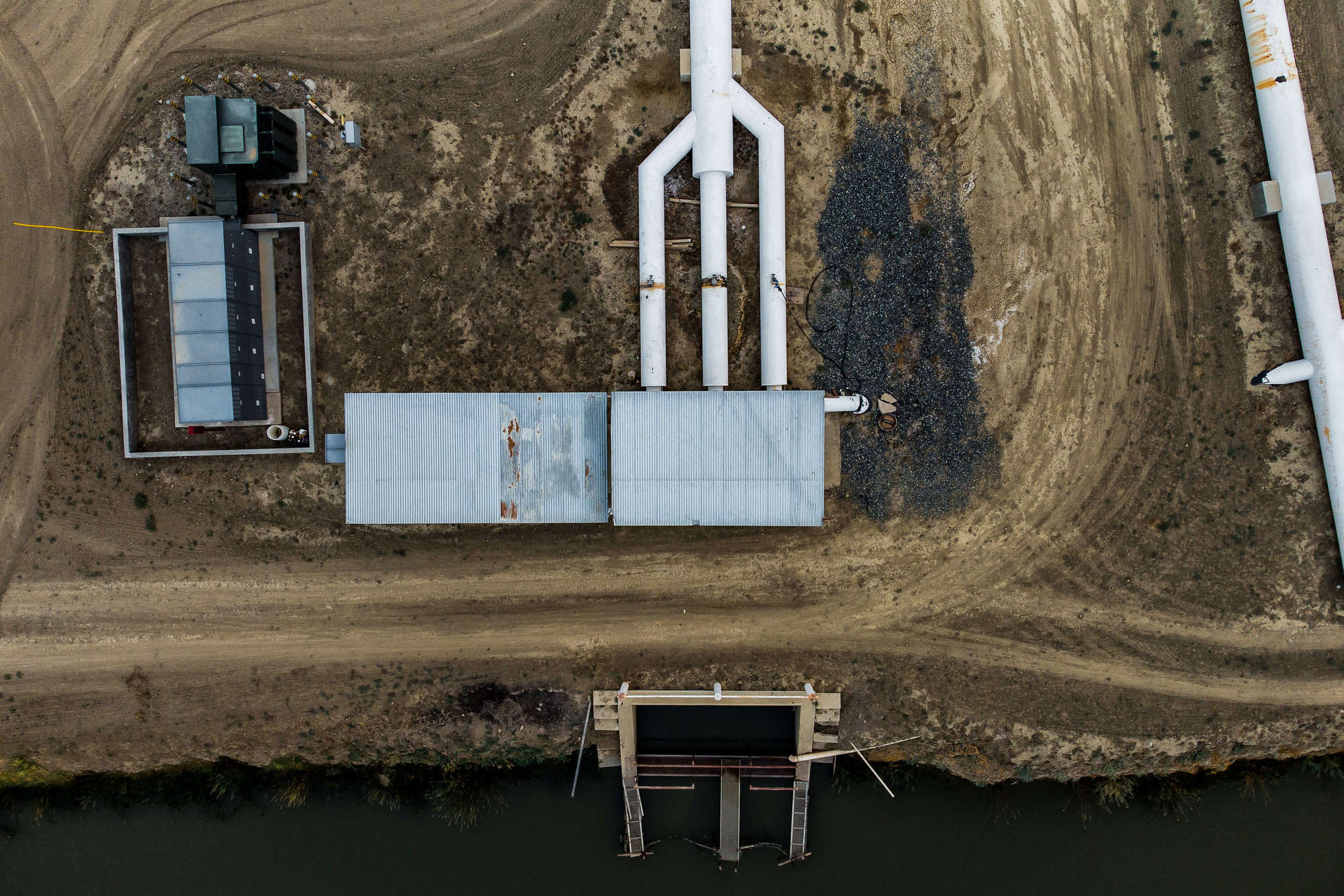
The Blakeley Canal feeds into a Dudley Ridge Water District lift station in Kings County, California. A lift station pumps water out of the Blakeley Canal and into pipelines. However, it is impossible to know where that water ends up.
Ryan Christopher Jones
For the portions that can be tracked through state and other water district records, the water is mostly flowing south to Kern County, much of it from Kings County’s two largest and most powerful farming operations — J.G. Boswell Company and Sandridge Partners.
Exactly how much is moving and who is benefitting from it are more murky questions, as water – especially river and groundwater – in California is notoriously hard to track. What is clear is that over the past 12 years, Boswell and Sandridge have moved a combined 239,000 acre feet of State Water Project water out of Kings County — all with approval from the state’s Department of Water Resources (DWR).
“There’s so many canals and ways it can move; it’s hard to track… Because once it’s pumped out, we aren’t getting it back.”
Some of that state contracted water appears to have been used in multi-million dollar deals by Boswell, based on the few records that could be tracked, and some has gone to Sandridge’s own fields in other counties, according to the company’s owner.
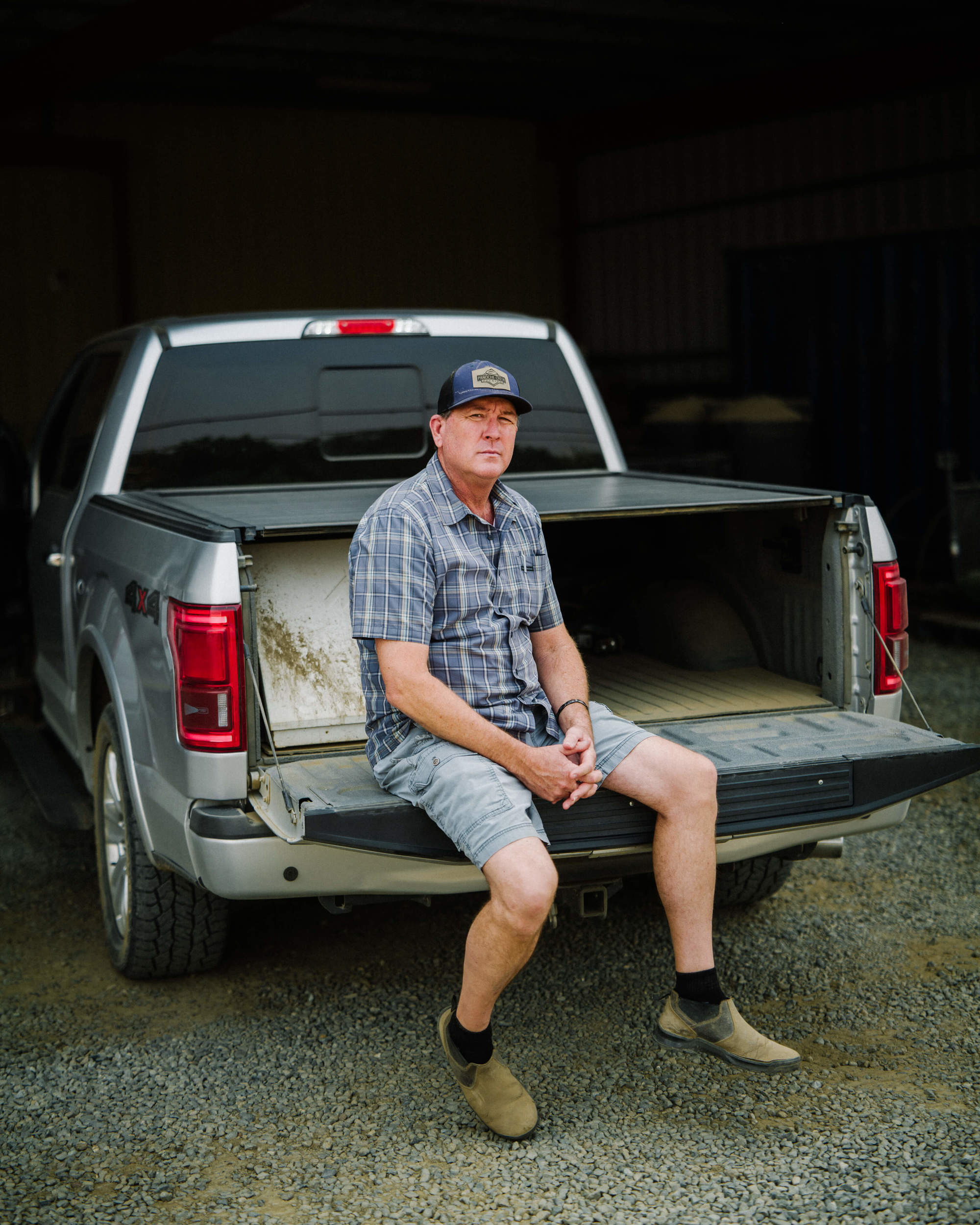
Ryan Christopher Jonesv
In addition to owning Steve Walker Farms in Hanford, California, Steve Walker provides contract labor, equipment and farm management services to other farmers.
The end result, though, is less water staying in Kings County. And the consequences of this could be far reaching. Less surface water forces growers to pay for deeper wells or additional water supplies — particularly expensive during one of the worst droughts in recent state history.
Some farmers can’t afford to do either, making the difficult decision to get out of agriculture all together. “Independent farmers are selling out,” said Kings County farmer Robert Smith, who grows walnuts, almonds, corn and cotton on about 1,000 acres. “I’m a small guy over here and the big-time guys, well I thought they were big at 10,000 acres, even they’re selling out.”
Smith, Walker and others fear that if large amounts of water continue to move out of Kings — with little to no oversight from the state — most smaller farmers will be driven out of a part of California they have called home for generations.
“It just doesn’t look very good for us right now,” Smith said.
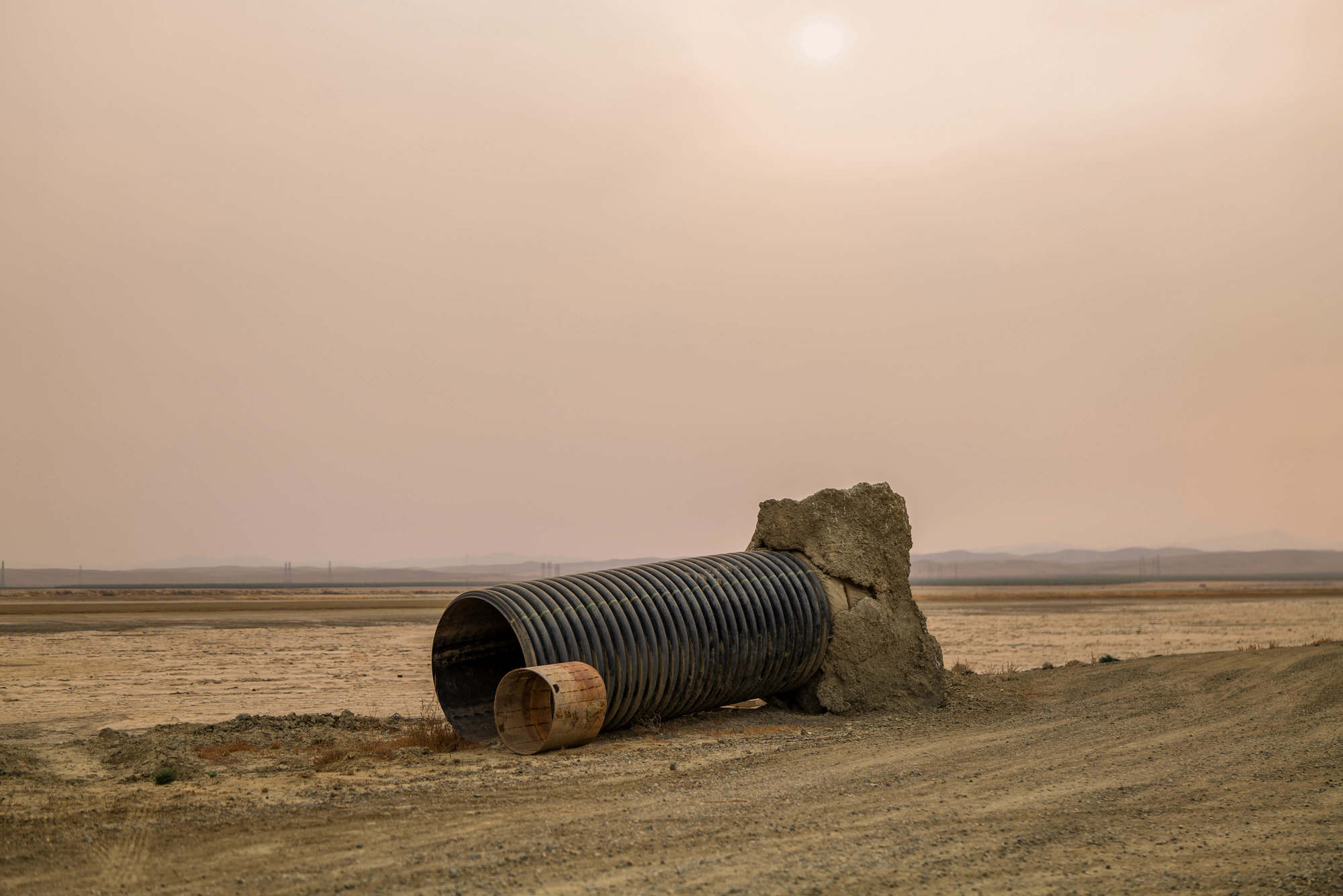
A pipe remnant from an old water movement infrastructure system sits abandoned next to the Blakeley Canal in Kings County, California, as smoke from forest fires fills the valley sky. On one particular weekend, the Air Quality Index was “very poor,” which indicated dangerously high levels of air pollution.
Ryan Christopher Jones
Kings farmers
Kings County is small by San Joaquin Valley standards — only 1,392 square miles, or just about the size of Rhode Island. By comparison, its closest neighbors, Kern, Fresno and Tulare sit at 8,000, 6,000 and 4,800 square miles, respectively. Like its neighbors, Kings is intensively farmed. About 90% of its farms are considered “family owned,” according to the 2017 US Department of Agriculture farm census.
Farming runs deep in the blood of growers like Jeff and Karen Gilcrease. The Gilcrease family has been growing crops in Kings County since the 1880s. They have the original 1881 homestead certificate signed by a secretary in the James Garfield administration for 80 acres southeast of Lemoore, where they still live and farm.
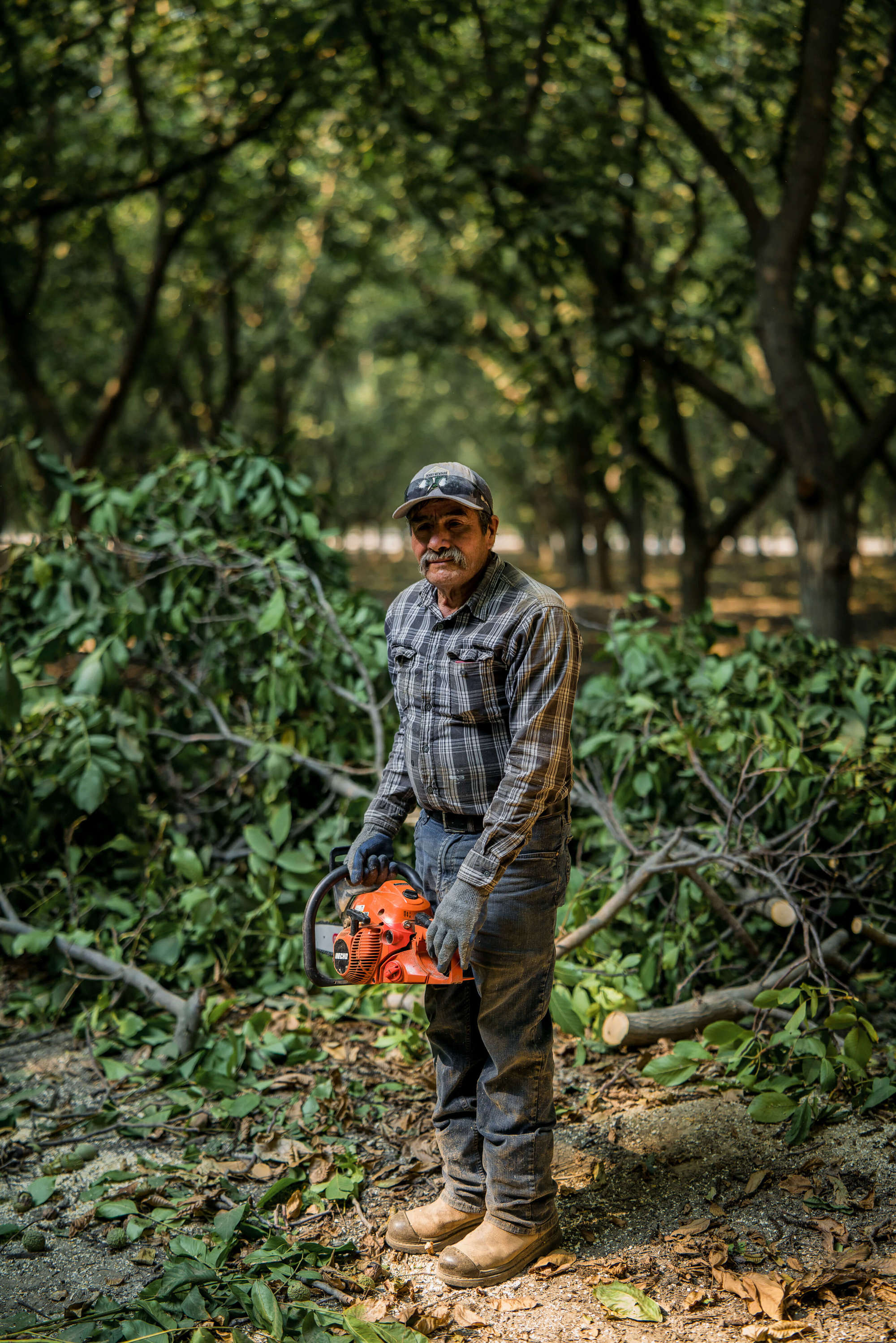
Ryan Christopher Jones
Jose Acosta, a worker for Steve Walker Farms, cuts down limbs from harvested walnut trees at Walker’s farm in Hanford, California.
Over the years, the farm has truly been a family operation — with Karen keeping the books and their children helping to bring in the harvests. Though the Gilcreases expanded to 700 acres at one point, they had to sell off part of their land because they didn’t have the water to keep farming it. They get some water from the Kings River but rely mostly on groundwater.
Jeff has been involved in the groundwater sustainability planning in his area and is concerned about the out-of-county water transfers he’s heard about. “It’s not good in the long term,” he said. A strong, diverse farming sector is vital to the local economy and food security — and it requires water.
“It might be legal, but it’s not moral,” Karen said of water leaving Kings.
Karen isn’t the only one who feels this way.
David Avila is a talkative 75-year-old of Portuguese ancestry whose family first came to California in the 1840s and has been farming in the Hanford area since around 1900. Avila, along with his wife and children, grows nearly 100 varieties of fruit trees on multiple small plots of land and sells the produce at dozens of farmers markets from Beverly Hills to San Luis Obispo.
He and his son know their land so well they can point out which areas retain more water in which seasons and the direction the water moves underground.
“Work with nature; don’t fight it,” Avila said repeatedly. But that’s become increasingly challenging.
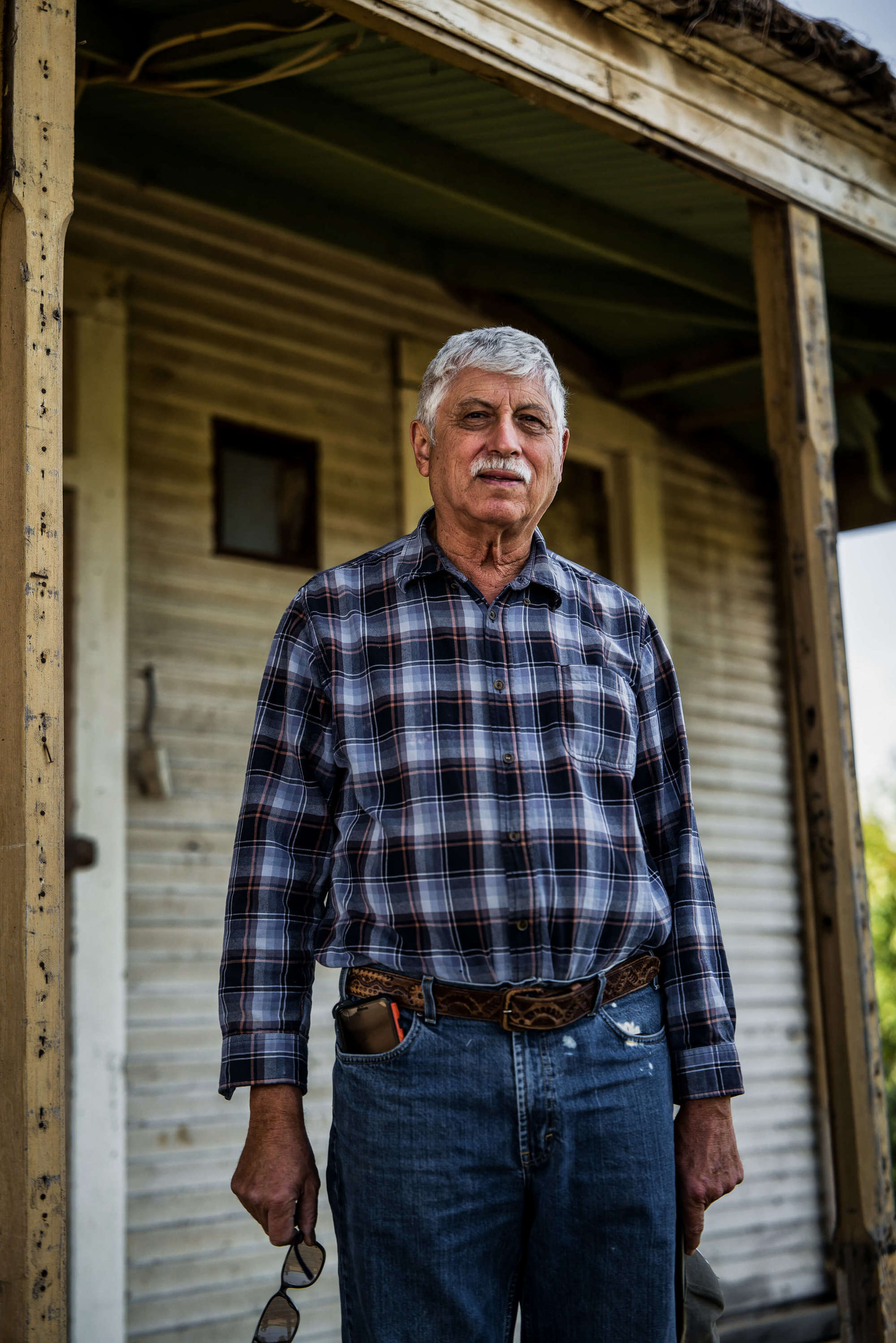
Ryan Christopher Jones
Hanford, California, farmer David Avila, 75, of Avila and Sons Farms, LLC, at a home that has been in his family for more than 100 years. The Avila family is from the Azores in Portugal, and they have been farming in the Central Valley for many generations.
He recalls that when he was growing up, the region was dotted with small dairies, orchards, rotating crops of corn, cotton and alfalfa, and open grazing land with sloughs that could absorb water in flood years. Now the land is covered with huge almond and pistachio orchards, permanent crops which account for more than 66,000 acres of Kings’ total 782,731 harvested acres, according to county crop reports.
Avila says corporations are gobbling up the land to plant more permanent crops and draining the county’s water in the process. “Water is our blood,” he said, and “they’re stealing it.”
Water is a key variable smaller farmers have little to no control over. Bigger landowners hold contracts for most of the state water brought to Kings from the Sacramento-San Joaquin Delta, and they own large portions of the private ditch companies that divvy up the Kings River water and ferry it to farms.
That leaves smaller farmers with mostly groundwater, which Walker said has dropped 100 feet to 120 feet just this year. That’s partly due to drought but also greater use. Kings County approved 1,238 new agricultural well permits between the start of the last drought in 2012 and 2021, according to county records.
“Water is our blood… they’re stealing it.”
“When you have a bowl and only three straws, it takes longer to empty,” Walker said. “You put 20 straws in it, it don’t take very long.”
Meanwhile, Smith hopes his young children will one day take his place on the tractor. But he fears family ownership is already being priced out of farming and predicts the business will be consolidated into fewer and fewer hands.
The data show that’s already happening. From 2002 to 2017, the most recent USDA farm census, the number of farms in Kings County declined 16.6%. But the size of farms increased 14.5% from an average 559 acres to 640 acres.
“The corporations and the bigger guys are buying up land left and right for astronomical prices,” Smith said. “Anything that has water on it, you’re going to contend with big money.” That includes land with river rights, state water contracts or even just groundwater.
“My dad said it from day one, he’d rather own all the water than all the gold in the ground,” Smith said.

An almond harvester shakes almond trees for harvest at Jeff Gilcrease’s farm in Hanford, California. It takes a gallon of water to produce a single almond.
Ryan Christopher Jones
The water titans
Boswell and Sandridge are the two biggest kids on the block when it comes to farming and water in Kings County.
Boswell has been woven into the fabric of Kings County since its founder, James Griffin Boswell, first set foot on the old Tulare Lake bed 100 years ago and envisioned a cotton empire. His nephew spun the company into a $2.5 billion international farming and development powerhouse. It now retains about 132,000 acres in Kings – as well as 3,700 acres in Tulare County and 23,000 acres in Kern County, according to ParcelQuest, a property information database.
Boswell has employed generations of Kings County families, mostly in the small town of Corcoran where a high school stadium and park bear the Boswell name. And the company maintains positions on just about every ag and water related board and commission in Kings, giving it considerable political heft.
The company is run from its Pasadena offices by James W. Boswell, chairman, CEO and great-nephew of the founder. For all its influence and power, Boswell is notoriously tight-lipped. Its principals and employees are rarely quoted in the media. Boswell repeatedly declined requests for interviews on this story.
In contrast, John Vidovich, who helms Sandridge, comes from a Silicon Valley farming-turned-developer family. He bought his first Kings County property in a foreclosure in 1994 and eventually amassed 102,000 acres in Kings – as well as nearly 40,000 acres in Kern County, 10,000 in Tulare County and 1,700 in Fresno County, according to ParcelQuest.

Hanford farmer Robert Smith decided to fallow some of the land used for cotton crops this year due to increasing water scarcity.
Ryan Christopher Jones
Vidovich made headlines – and a lot of enemies – in 2009 by permanently selling rights to 14,000 acre feet of state water from a Kings County water district to southern California for $73 million, according to media reports. The sale is still considered a blow to Kings’ water portfolio by other farmers. And Vidovich has said if he had to do it over, he wouldn’t make that sale.
His pumping and movement of groundwater out of its home district has also landed him in a dubious spotlight, according to media reports. In 2017, he made news again for his part in a plan to take Kings River flood water out of the county — an effort that’s still ongoing. Though he insists this flood water isn’t being used and is, in fact, a nuisance, locals consider it an attempted theft of the Kings River.
Vidovich participates on several local water boards, even serving as chair on one. Though he doesn’t seek out media attention, when asked about water under his control, he rarely refuses to talk. He often points out that water districts, which oversee water allocations and maintain infrastructure, are public entities, and the public has a right to information, as he told SJV Water in an interview for this story.
Water fights
Though Boswell and Vidovich both have access to large shares of water, their relationship over this precious resource is downright antagonistic. They are now the driving forces behind two major legal battles over Kings River water.
In one battle, the Kings River Water Association, where Boswell is a major rights holder, is suing Tulare Lake Reclamation District 761 and Sandridge Partners, run by Vidovich, for shipping its Kings River water to lands it owns in western Kings County. The association contends that even though those lands are in the county, they are beyond what’s considered the river’s “service area.” And river water cannot be taken outside that service area, according to the lawsuit.
The case is being heard in Kern County by Judge David Lampe. The judge made a partial ruling in June that long standing river agreements do allow river owners to move water within the service area. The boundaries of that service area, however, have yet to be determined. A trial date has been set for December 2022.

Smoke from nearby forest fires darkens the sky at sunset in Kings County, California. On this weekend in mid-September, the Air Quality Index was “very poor,” which indicates dangerously high levels of air pollution.
Ryan Christopher Jones
Boswell and Vidovich also find themselves on opposite sides of whether the Kings River is being fully utilized by all of its rights holders. If the State Water Resources Control Board determines that the Kings River Water Association isn’t fully using its water rights, it could give those rights away.
The sprawling Semitropic Water Storage District in Kern County wants Kings River flood water that it says current rights holders are letting flow to the ocean in heavy precipitation years. The district plans to store flood flows on land next to the California Aqueduct, the main artery that moves water from northern to southern California, then pump it south. Vidovich owns that land, and Semitropic has already paid him $40 million for an easement. Vidovich would also get a cut of the floodwater and be allowed to use the facilities to move some groundwater, per the project contract.
The Kings River Water Association, including the Tulare Lake Basin Water Storage District, where Boswell is the majority landowner, are fighting the plan tooth and nail. According to legal briefs filed by Tulare Lake, all the floodwater that can be put to beneficial use has been, and there’s no leftover water available for Semitropic. The Water Board began holding hearings on the issue this past summer.
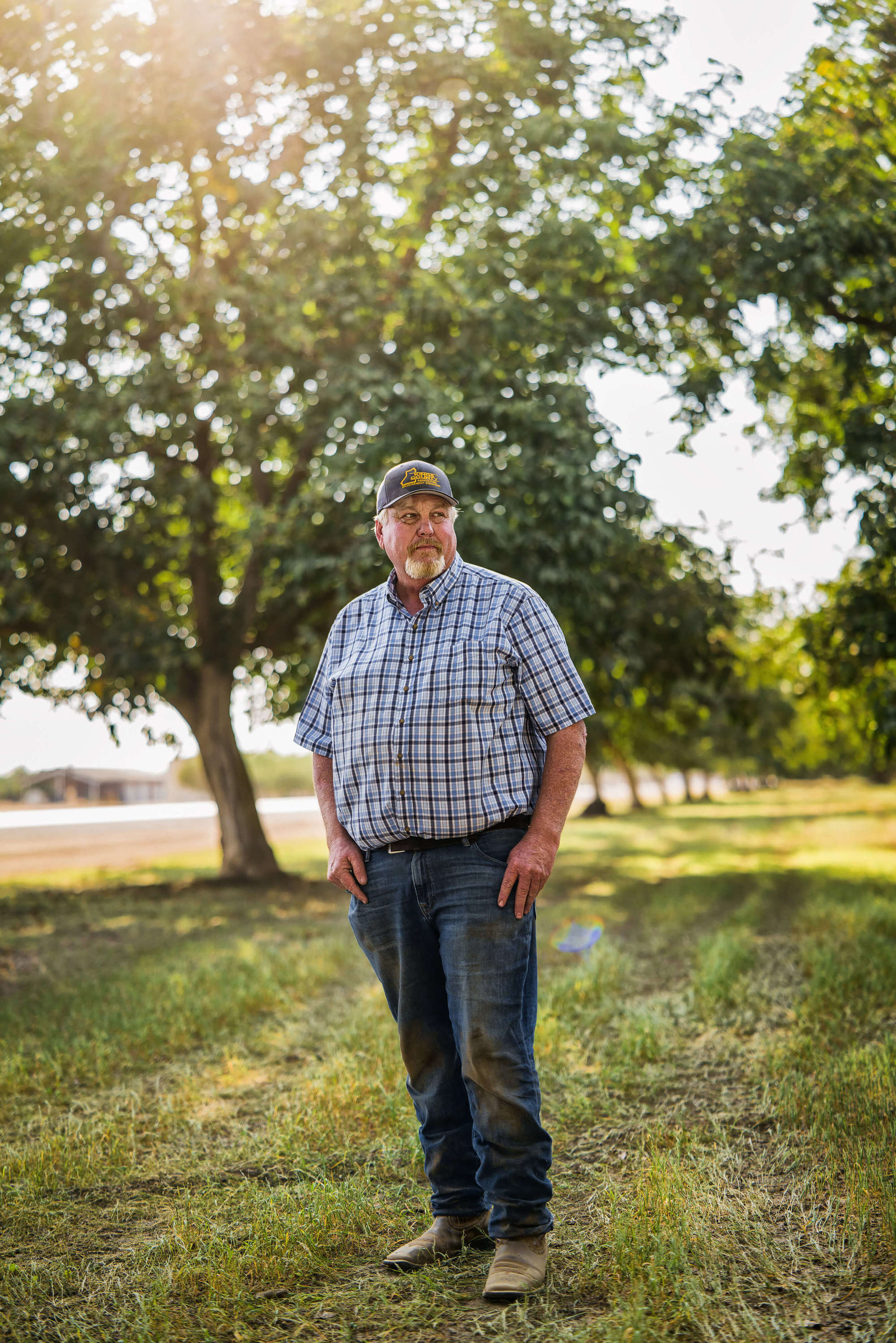
Ryan Christopher Jones
Hanford walnut farmer Doug Verboon is outspoken about water politics in Kings County and currently serves on the Kings County Board of Supervisors.
The companies are also at odds over groundwater.
In a letter to the state last summer, Boswell’s vice president – attorney Jeof Wyrick – who chairs the El Rico Groundwater Sustainability Agency, accused Vidovich of moving groundwater out of the area via pipeline where it cannot be tracked. He demanded Sandridge provide more data to the other groundwater sustainability agencies.
“There is some uncertainty by El Rico GSA with regard to this request because of the hidden nature of Sandridge’s operations,” Wyrick wrote in the June 2020 letter.
In an interview, Vidovich denied sending groundwater out of Kings County. “Not one acre foot,” he insisted.
When asked about the pipeline Wyrick mentions in his June 2020 letter, Vidovich says only floodwater from the Kings River may have been shipped out of the county.
Vidovich freely acknowledges that he’s moving some surface state water out of Kings County. But that’s water from the Sacramento-San Joaquin Delta, not native Kings County water. “I’m all for moving water around,” he said. “We amalgamate our water to use on our most productive land.” Over the past 12 years, he’s moved about 137,000 acre feet of his state water from Kings County south to nut orchards he owns on the west side of Kern, according to state and other water district records.
Boswell has also been moving water out of Kings. Since 2009, the company has transferred or sold 102,000 acre feet of its surface water out of the county, according to records from DWR, Tulare Lake Basin Storage District and the Kern County water agency. The difference, according to Vidovich, is Sandridge is letting some of its Kings County lands go fallow, while, he says, Boswell is pumping additional groundwater to continue farming its Kings County acreage.
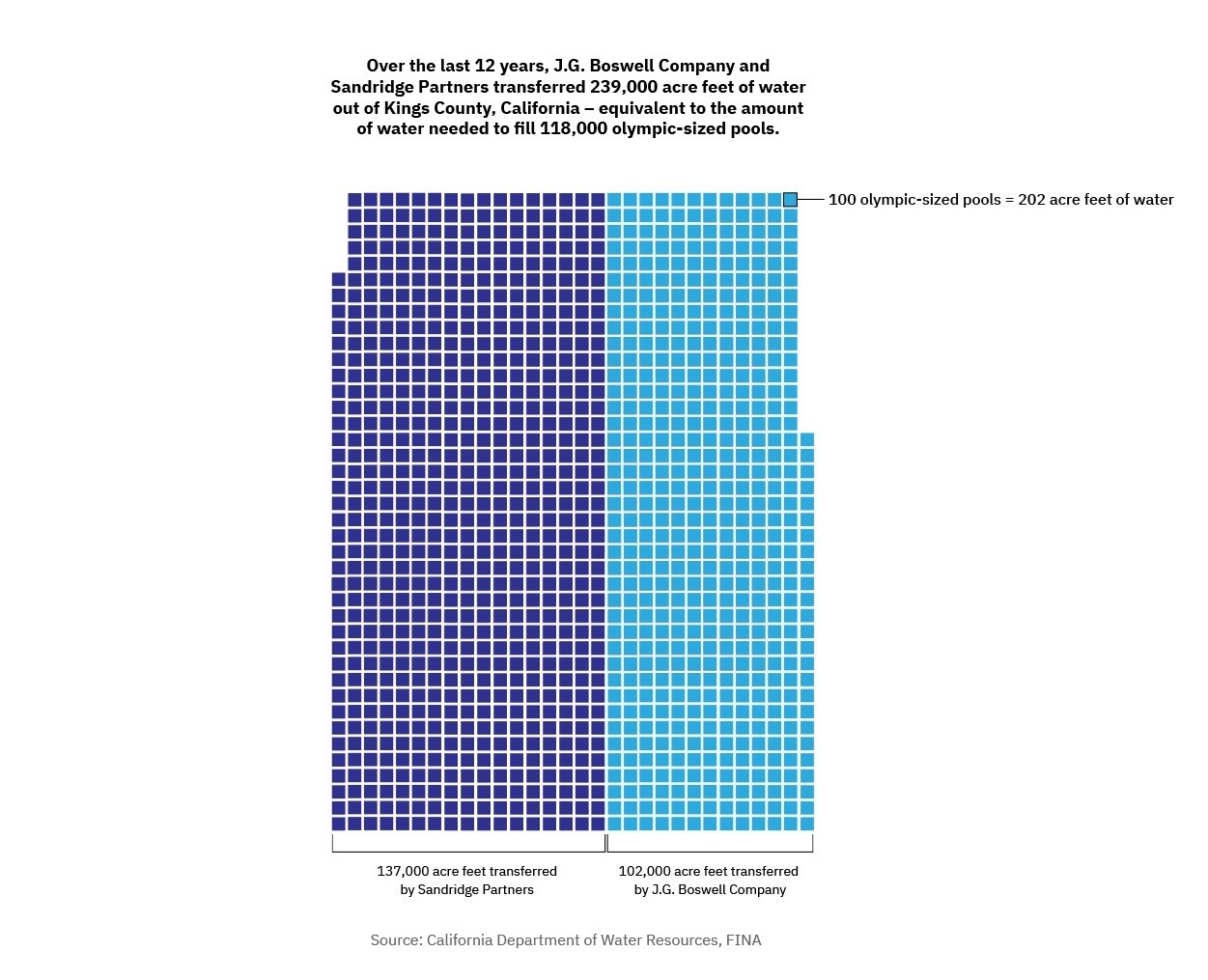
CCIJ
It’s unclear if Boswell is selling surface water on a regular basis, but according to invoices obtained by SJV Water, the company did sell 49,000 acre feet of its Kings River water out of the county for $47.5 million in 2015 and 2016 and another 35,000 acre feet of river water for an undisclosed amount in 2019.
“It’s really, really not cool,” Vidovich said.
Boswell has refused requests to answer questions about the company’s water moves – including how much it pumps. That information also isn’t contained in groundwater plans for the El Rico Groundwater Sustainability Agency, which covers Boswell lands almost exclusively.
However, during testimony in the state’s Kings River proceeding, Boswell employee Mark Unruh said the company irrigates nearly year-round, from late October through the summer. It has 61 wells capable of pumping a combined 240 cubic feet per second. At the upper limit of 300 days per year, that could mean Boswell is pumping up to 140,000 acre feet a year.
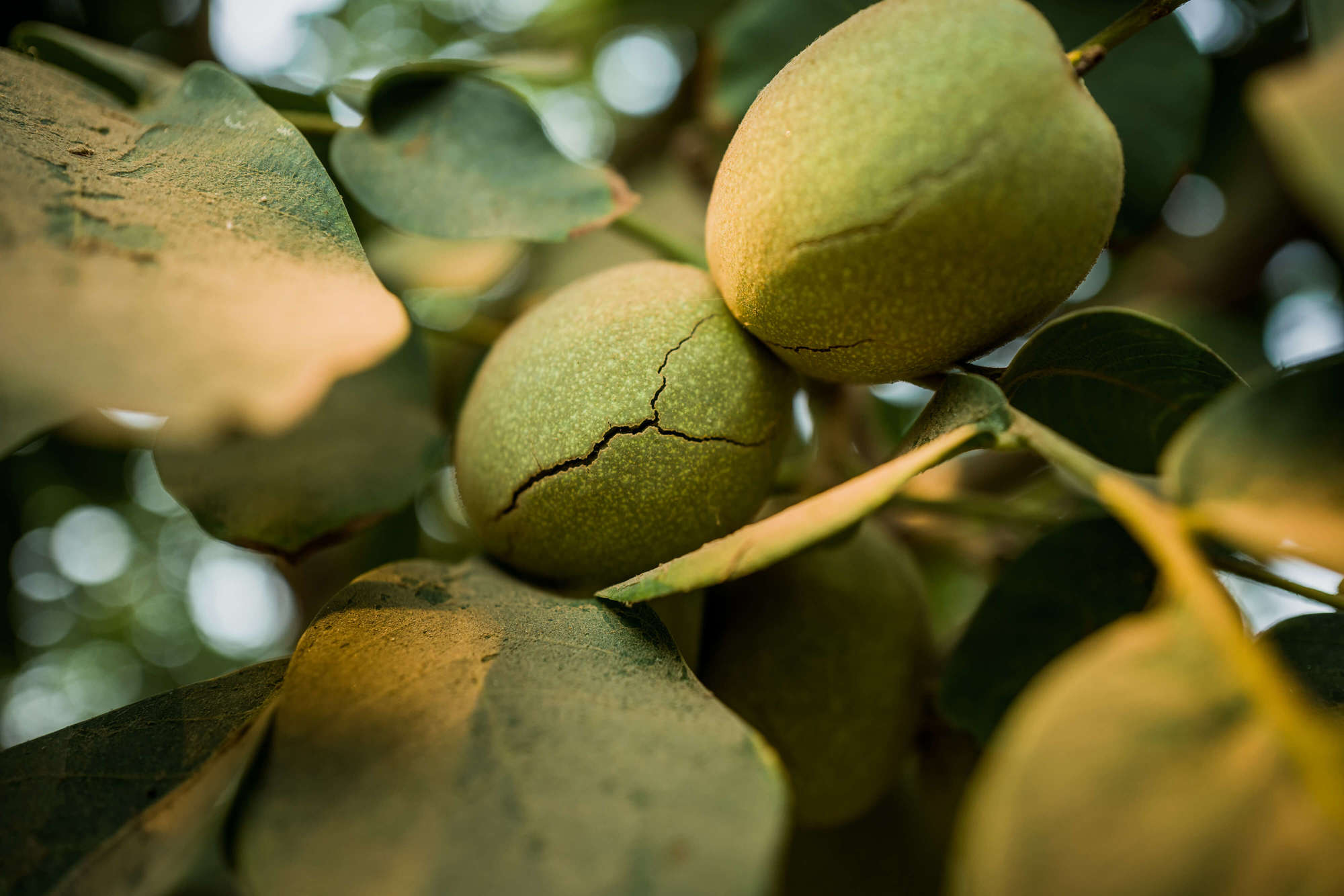
A cracked, ripened walnut skin at Steve Walker Farms in Hanford, California. California produces 99% of all domestic walnuts. A single walnut requires nearly five gallons of water to produce.
Ryan Christopher Jones
Right or wrong
Whether the water is leaving Kings County for cash payments or to grow crops that will eventually be sold for profit, it’s all the same thing, said economist David Zetland, who lectures on the politics and economics of water at Leiden University College in the Netherlands.
“Are they in the wrong for moving water? Legally? No,” he said. “But in terms of equity, yes, there is a problem.”
Exporting large amounts of water from one farm region to another and aggressively pumping groundwater both negatively affect other landowners. Less surface water creates a greater need to pump from underground, which lowers the water table for all users. As water drops, growers engage in a well-digging arms race.
“From that perspective, it becomes massively economically inefficient,” said Zetland. Digging a new well can cost tens of thousands of dollars, and as each farmer chases water deeper into the earth, it not only pushes others to go deeper, it undermines expensive efforts to recharge the aquifer.
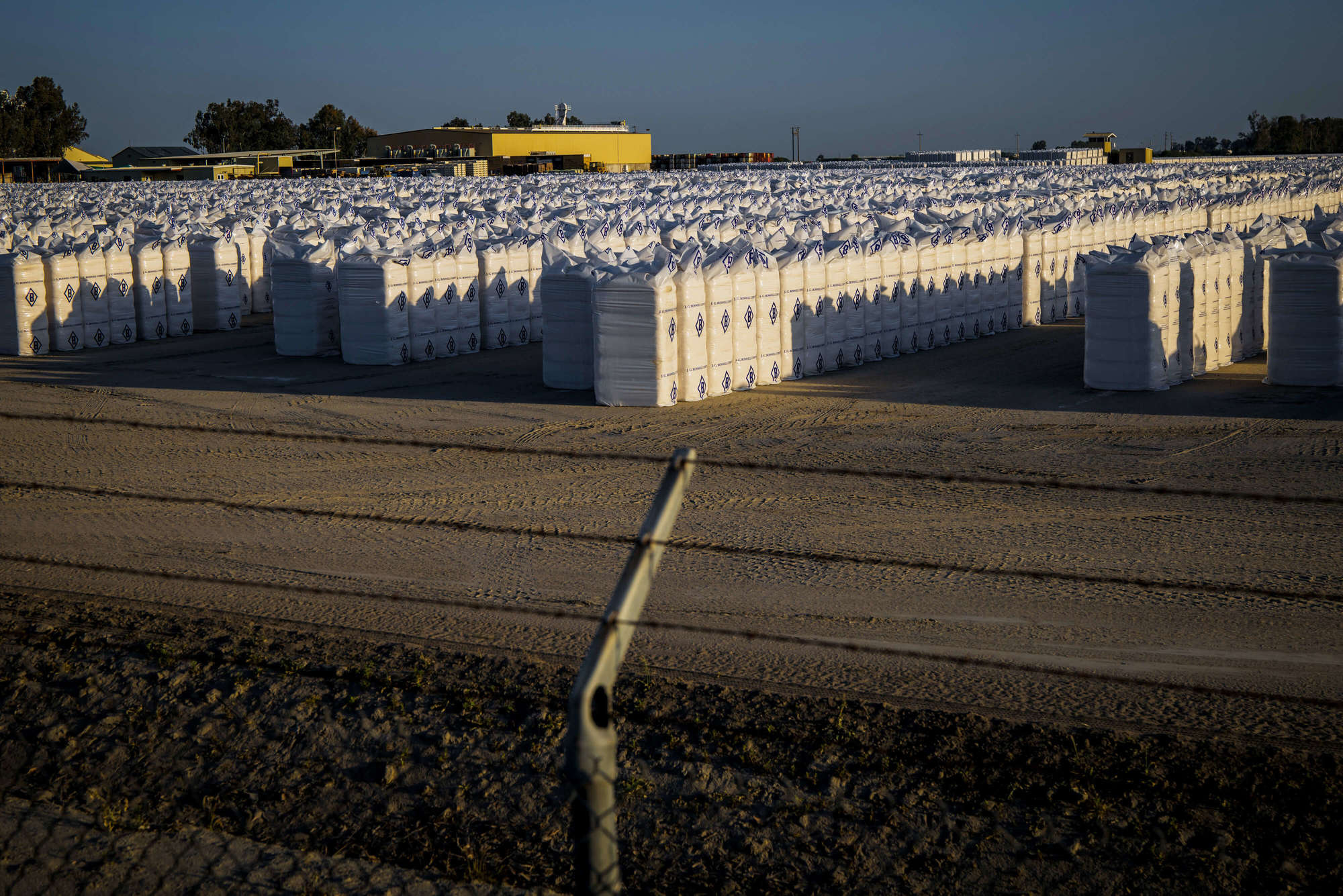
Bales of ginned cotton sit at J. G. Boswell Company’s bale yard in Corcoran, California. Boswell was a pioneer of growing cotton in the Central Valley. Even though J. W. Boswell, the company’s CEO, told The Wall Street Journal in 2000 that a farmer could make more money selling a water option than selling cotton, they continue to grow it in the Tulare Lake bed.
Ryan Christopher Jones
For example, Westlands Water District, which borders Kings County, plans to gather water in heavy rainfall years and inject it into the aquifer to safeguard water levels. But “it’s difficult when right next door they’re dropping [water levels] 60 to 100 feet,” Russ Freeman, Westlands’ Deputy General Manager for water resources, said in a previous SJV Water article.
Those are just some of the indirect costs attached to moving large amounts of water out of a region, Zetland said. The cost to society of pushing out smaller farmers is harder to calculate.
“If the little guys disappear, we lose business diversity and expertise,” Zetland said. “We lose entrepreneurs. We lose innovation.”
Still, Zetland didn’t fault Sandridge or Boswell. “This is what businesses do,” he said. “The state of California is at fault. They set the ground rules, and once the rules are set, people play the game.”
Oversight overlooked
Doug Verboon, a Kings County farmer and member of the county board of supervisors, sounds weary when he talks about Kings County’s water.
“People complain all the time about what’s happening with our water, but no one wants to do anything,” he said. He tried to get the county to pass an ordinance barring the export of native groundwater but said he could not get enough votes. When he brought the issue to the Kings County Water Commission in February 2020, it was tabled and the commission has not met since.
“When you have a bowl and only three straws, it takes longer to empty. You put 20 straws in it, it don’t take very long.”
In the meantime, Boswell and Vidovich have brought their concerns to California’s DWR, which oversees transfers involving state water. It is also tasked with reviewing groundwater plans under the state’s Sustainable Groundwater Management Act (SGMA), passed in 2014.
That act requires groundwater agencies in areas with critically over drafted water basins to draw up plans to bring aquifers into balance by 2040, meaning more water shouldn’t be pumped out than goes back in. The entire San Joaquin Valley, including Kings County, is critically over drafted.

For the past 20 years, from May to October at “Thursday Night Market Place” in Hanford, California, farmers have set up small booths to sell their produce and other local products.
Ryan Christopher Jones
Water Resources Director Karla Nemeth acknowledged she had met with representatives of groundwater agencies regarding allegations that Boswell is aggressively pumping its Kings County lands, because it’s selling off its state water. But, she said, her department can’t really step in until it has reviewed groundwater plans submitted to the state in 2020.
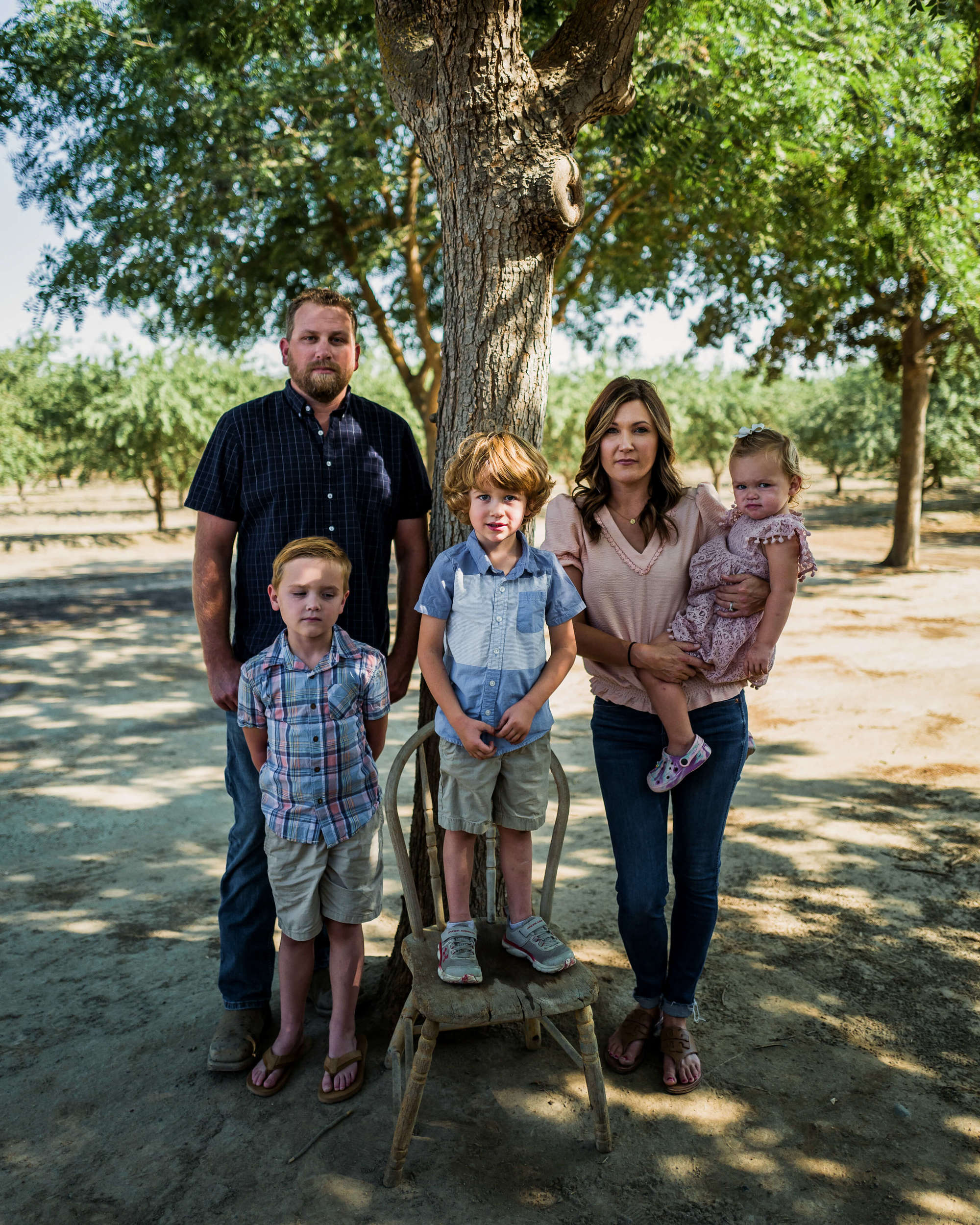
Ryan Christopher Jones
Hanford farmer Robert Smith, his wife Courtney and their three children, Ryker, six, Rhett, four, and Reese, one. Smith fears that his children will not be able to continue his family’s farming tradition because of increasing water scarcity and uncertainty, along with overall increasing costs, in the Central Valley.
“In terms of special enforcement to shut things down, that’s not what SGMA provides to the department,” she said. The agency’s role is simply to review groundwater plans to see if they’re adequate. If the plans are rejected and local groundwater agencies refuse to make corrections, the state can refer the issue to the Water Resources Control Board, which could set pumping limits and issue fines — but only after a lengthy process.
That said, she explained the department would be looking closely at groundwater pumping and water transfers from Kings County, because it appears “this is a hot spot where the math doesn’t work.”
“If we had water transfers that we know don’t mesh with an approved groundwater sustainability plan, that’s going to be a problem for DWR’s continued approval of those transfers,” Nemeth said, adding that the department will be reevaluating its transfer program to add greater oversight and transparency.
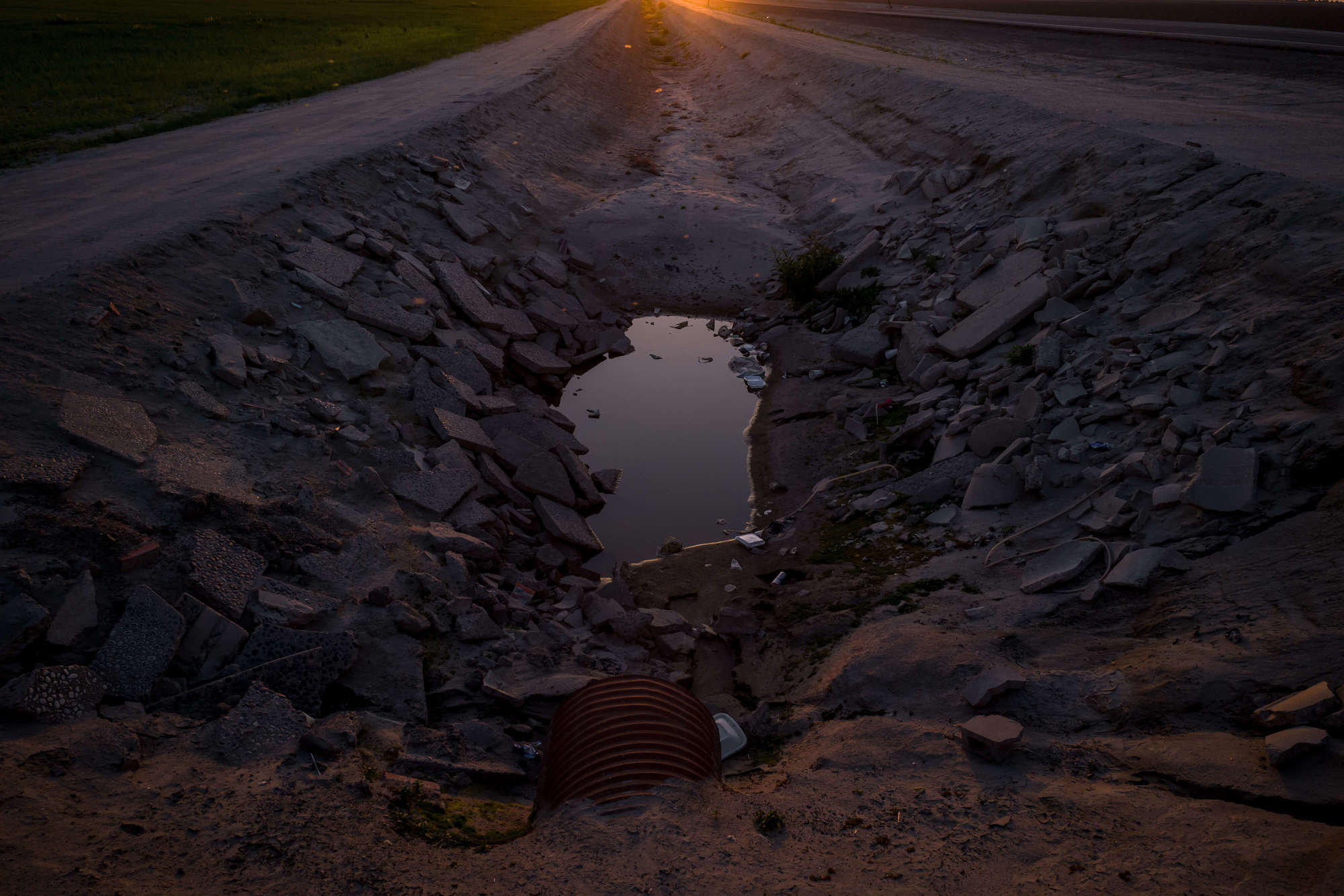
A small ditch near Corcoran’s Cross Creek levee on Whitley Avenue between 9th and 10th Avenues. Corcoran, located in King’s County, California, is home to an office of J.G. Boswell Company, one of the region’s largest farming operations. The company moves large amounts of surface water out of Kings County and into Kern County, but the ultimate destination of that water is unknown.
Ryan Christopher Jones
“Pumping and pumping”
Many Kings County farmers, who have watched water leaving their region, wonder if it’s being sold to Los Angeles. The city’s political clout, money and history of reaching north to quench its thirst make it an obvious water bogeyman to growers in the San Joaquin Valley. However, state and water district records indicate the Boswell and Sandridge water is largely staying in the valley.
Though he did sell a chunk of water rights to southern California in 2009, Vidovich scoffed at the idea that he’s currently selling water to the southland. “No, no, I’m not selling water to LA,” he said. “It doesn’t make economic sense. And if it’s not economical, you don’t have to question the morality.”
“I’m a small guy over here and the big-time guys, well I thought they were big at 10,000 acres, even they’re selling out. It just doesn’t look very good for us right now.”
Ultimately, he said, even if Boswell and Sandridge did move all their state water out of Kings County, it’s a fairly minor loss to the county. Combined, the two companies control close to 90,000 acre feet of the total 140,600 acre feet of contracted state water. But those numbers reflect full contracted allocations. The State Water Project rarely delivers full allocations and, in fact, only delivered 5% of contracted water during this past drought year.
“It’s a decimal point,” Vidovich said of state water amounts compared to what farmers use from rivers and groundwater.
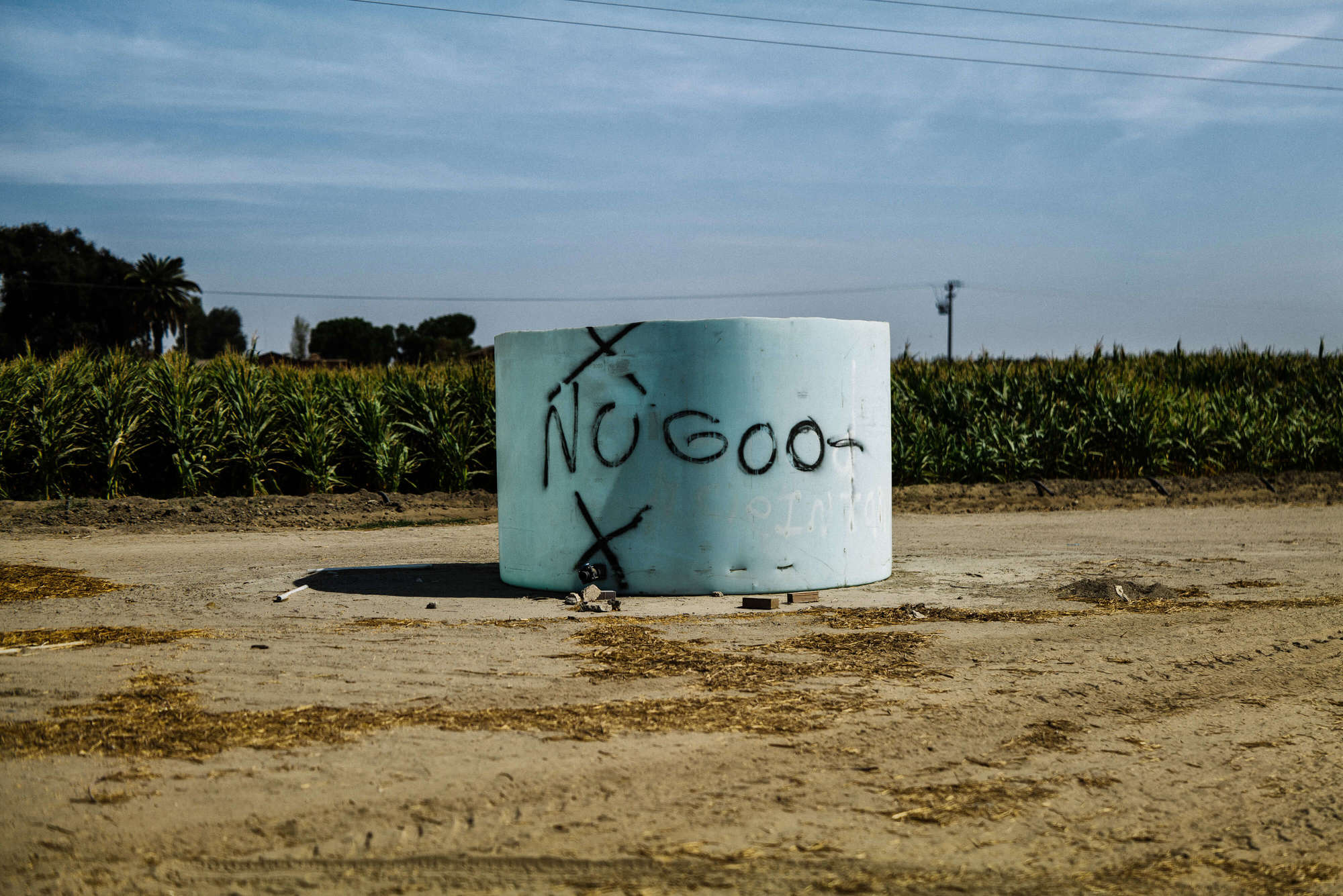
An old water tank declared to be “no good” sits discarded on a farm in Lemoore, California.
Ryan Christopher Jones
And that may be true. A 2020 groundwater sustainability report shows that over the previous five years, agriculture in Kings County relied on an average of about 319,000 acre feet from local rivers and streams, 475,000 acre feet from groundwater and just 37,000 acre feet of state water. However, Vidovich’s comments do not address whether all the river and groundwater is being used in Kings County or sent elsewhere — a question that has become nearly impossible to answer.
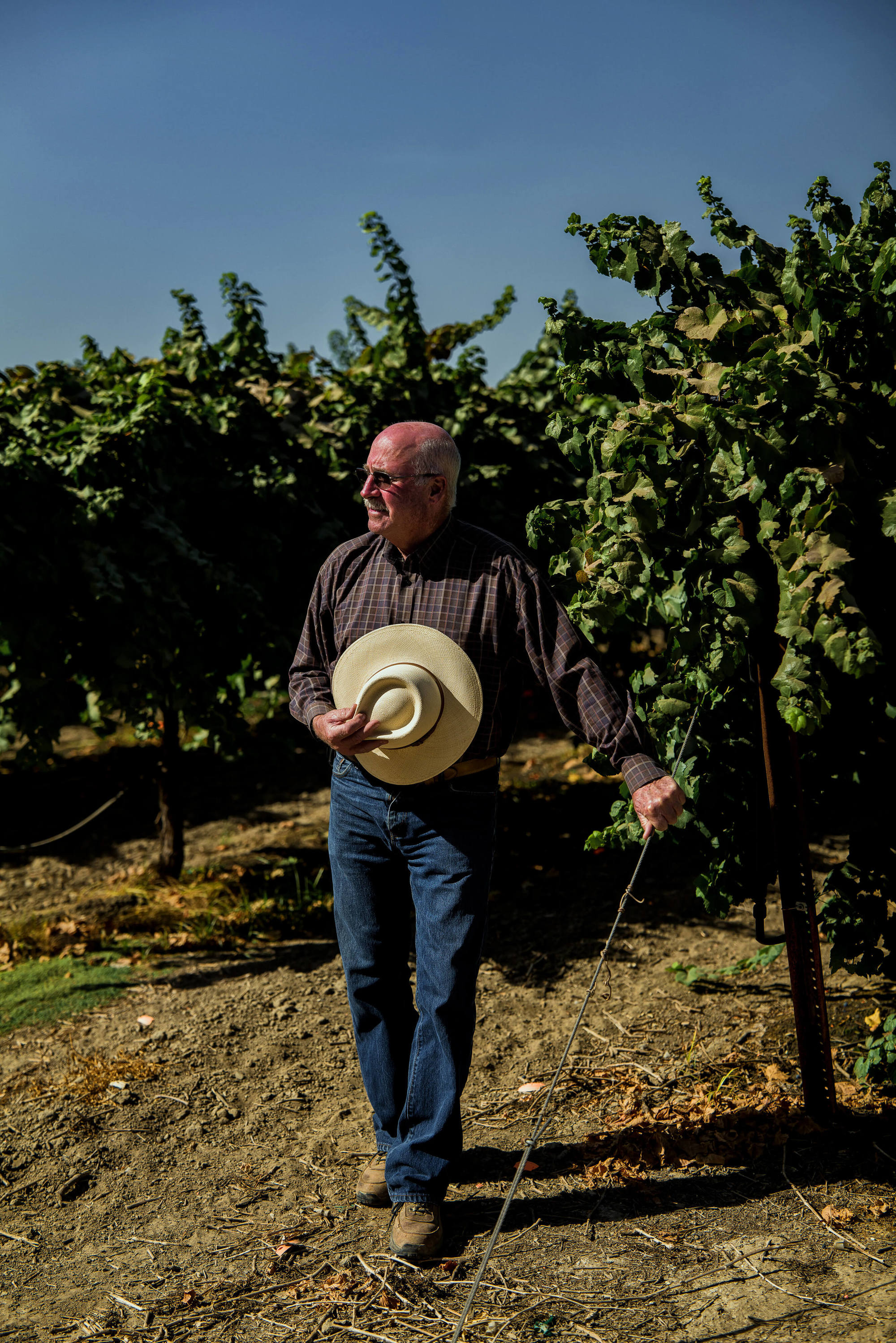
Ryan Christopher Jones
Lemoore, California, farmer Jeff Gilcrease runs the farm that his family founded in the late 1800s. Gilcrease farms grapes and almonds on less than 1,000 acres. Gilcrease is concerned that all the water movement out of Kings County is not good for farming in the long term.
Though Vidovich didn’t feel state water movement would substantially impact Kings County farming, he still predicted farming will shrink there. That’s true of the entire San Joaquin Valley, where he said farming’s footprint is retracting because of pumping restrictions looming under the state’s new groundwater law.
For his part, Vidovich is ready for the water pinch. His strategy has always been to use about 30% of his land for farming and 70% for its water.
“We’re preparing for SGMA. Everyone else is just pumping and pumping,” he said.
That’s fine for a farming operation the size of Sandridge or Boswell, but smaller growers can’t afford to let that much ground go unplanted.
“The little guy is gone,” said Walker, the walnut farmer. “I’ve seen a lot of people come and go out here. But, in the last five or 10 years, only corporate guys have been coming in. Everyone else is leaving.”

The phrase “God is Watching” is painted on the back of a building occupied by a thrift store in Selma, California. The building is mostly surrounded by farmland and is a popular stop for taco trucks that are frequented by farm workers who work on farmland nearby, including farms in Kings County.
Ryan Christopher Jones


